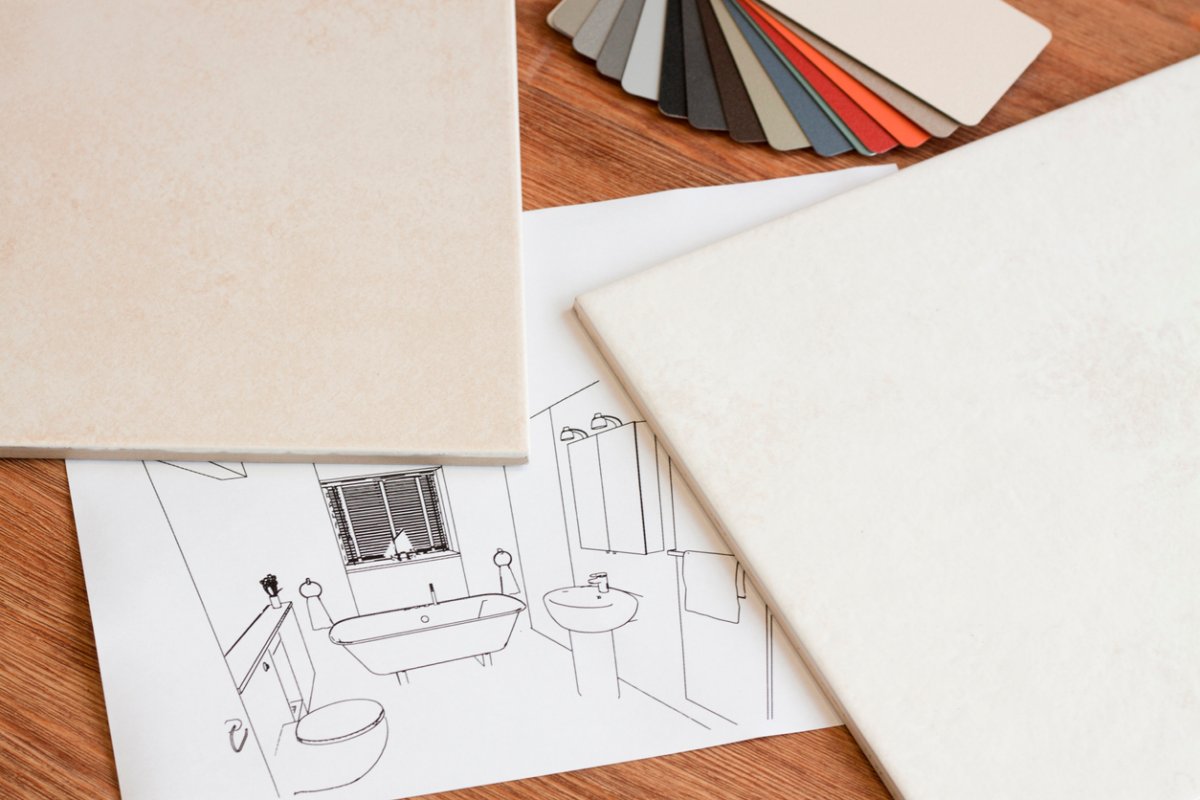We may earn revenue from the products available on this page and participate in affiliate programs. Learn More ›
Choosing the right bathroom flooring can be a challenge. It’s not just a matter of matching a particular decor. The flooring needs to handle frequent moisture and splashes, as well as changes in temperature and humidity. A nonslip surface makes a bathroom floor safer, and it should also be easy to clean.
Fortunately, bathroom remodelers have a wide range of options to choose from. There is something to suit every style, from cool and contemporary to warm and traditional—and there are solutions for every budget. Let’s look at nine popular bathroom flooring ideas that are both attractive and durable.
1. Ceramic and Porcelain
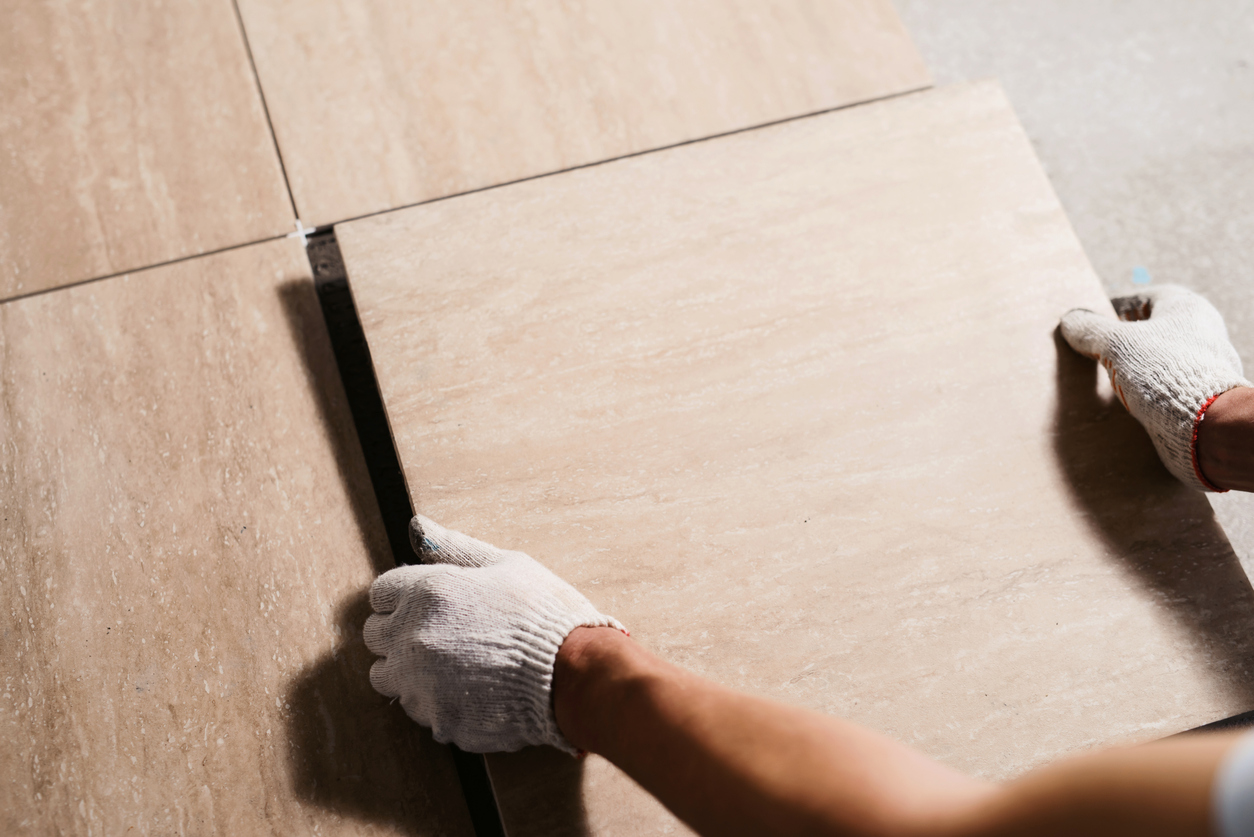
Ceramic and porcelain tiles have long been favorite bathroom flooring options. The range of styles is vast, and ceramic planks that resemble wood have become a popular alternative to traditional square ceramic tiles. Bathroom tile flooring comes in a number of different sizes, making it a versatile choice for everything from small bathrooms to large floor areas. Tile is a great choice for a traditional bathroom, but can also be laid with very thin grout lines for a contemporary feel.
When selecting tiles it’s important to check whether they are suitable for bathroom flooring. Porcelain is waterproof and easy to maintain, but both unglazed earthenware and stoneware are porous, so they need to be sealed. Sealer needs to be reapplied periodically, making those materials a relatively high maintenance choice for a bathroom.
Pros: Hard-wearing and available in a vast range of colors, styles, and sizes
Cons: Can feel cold, become slippery, and be time-consuming to correctly install
RELATED: How to Install Tile the Right Way
2. Vinyl
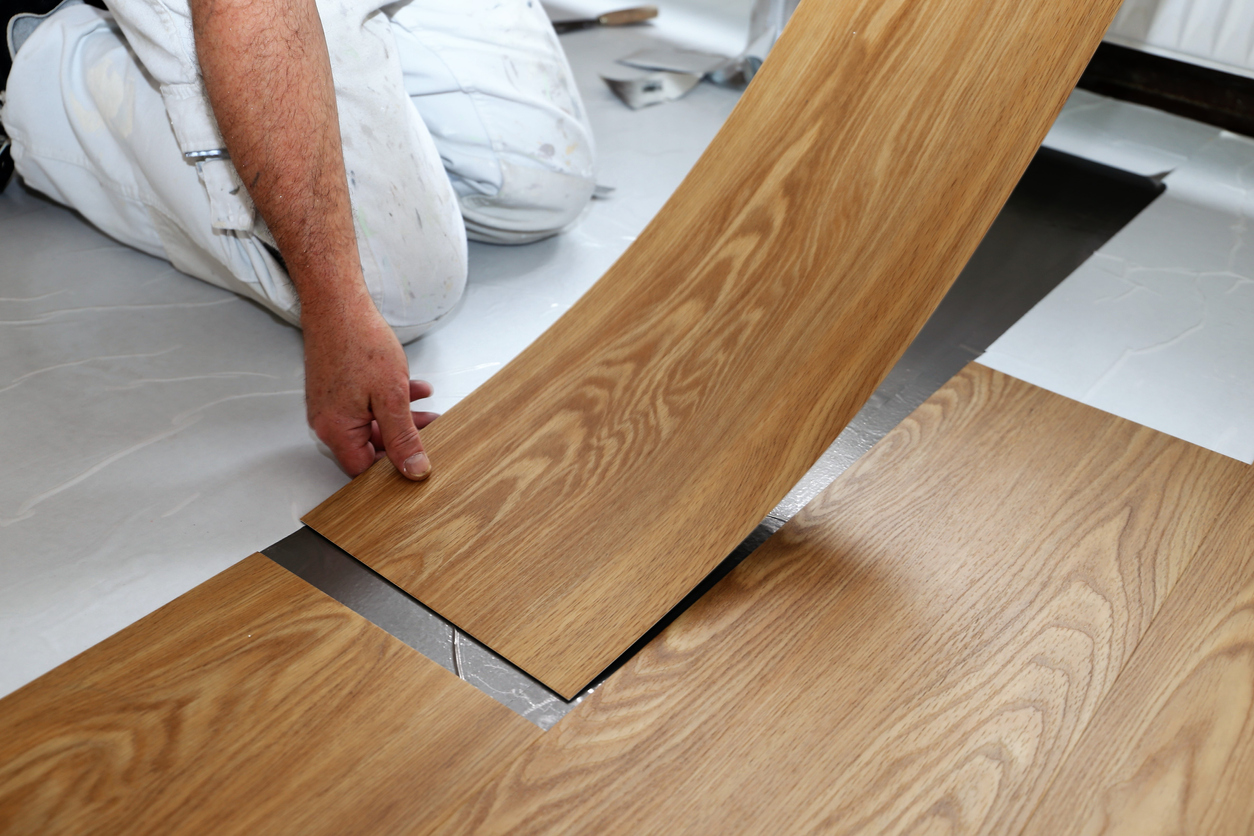
Vinyl has a lot going for it. This waterproof bathroom flooring is perhaps the easiest type to install, often warmer underfoot than porcelain or ceramic tile, and it has a safe, tactile surface that can be printed in virtually any color or pattern—even mimicking stone and wood.
Vinyl flooring is divided into two types. Standard vinyl is an inexpensive bathroom flooring that comes as sheets or tiles. It can be cut with a utility knife, making it easy to fit around awkward shapes. Vinyl sheets are glued down, whereas vinyl tile is usually self-adhesive.
The second type, luxury vinyl plank (LVP) comes as boards that lock together, and are laid as a floating floor. LVP is constructed of multiple layers that often include cork or foam to increase comfort underfoot. LVP is often confused with laminate flooring.
Pros: Versatile, budget-friendly, and easy to install
Cons: Quite thin, so a smooth subfloor is required to prevent irregularities from showing through
3. Waterproof Laminate
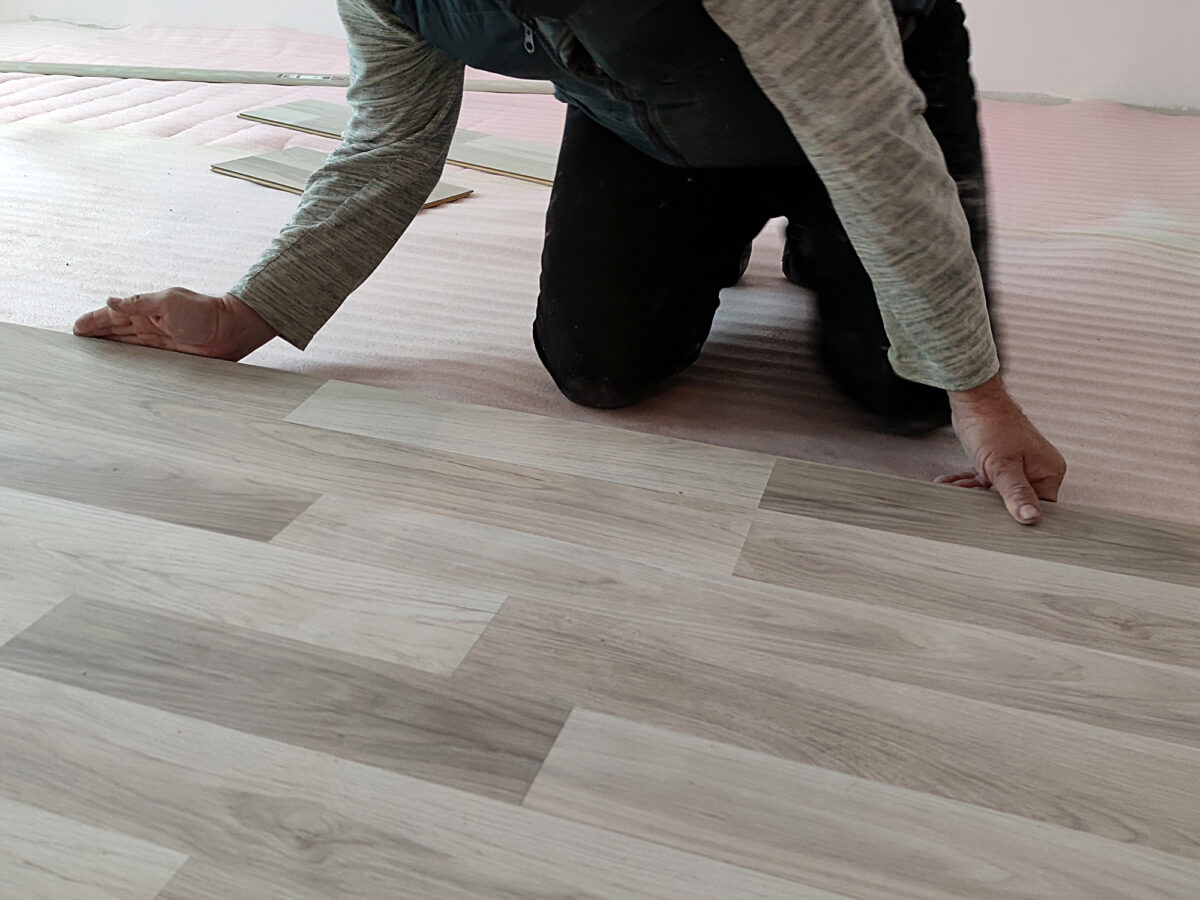
Waterproof laminate is another flooring that can help keep down the cost of bathroom remodeling. It is supplied as click-together planks, usually with a realistic wood grain pattern. While this might sound restrictive, the range varies from pale gray weathered boards to rich dark oaks. Its ease of installation makes it a popular DIY choice, and it is much better suited to a bathroom than real wood.
Waterproof laminate is often confused with luxury vinyl plank flooring, but there are important differences in structure. LVP has a core that is either wood or stone, bonded with plasticizers, and is very stable. Meanwhile, laminate uses a fiber core that can swell if it gets wet. In a worst case scenario, the edges of laminate will peel, and the floor will buckle. For bathroom use, it is absolutely vital to choose a fully waterproof version—not those that are described as water-resistant. Even then, water should not be allowed to pool on the surface for long periods.
Pros: Low-cost and easy to install, and it comes in a wide range of realistic wood grains
Cons: Can swell and distort if water is left on the surface
4. Linoleum
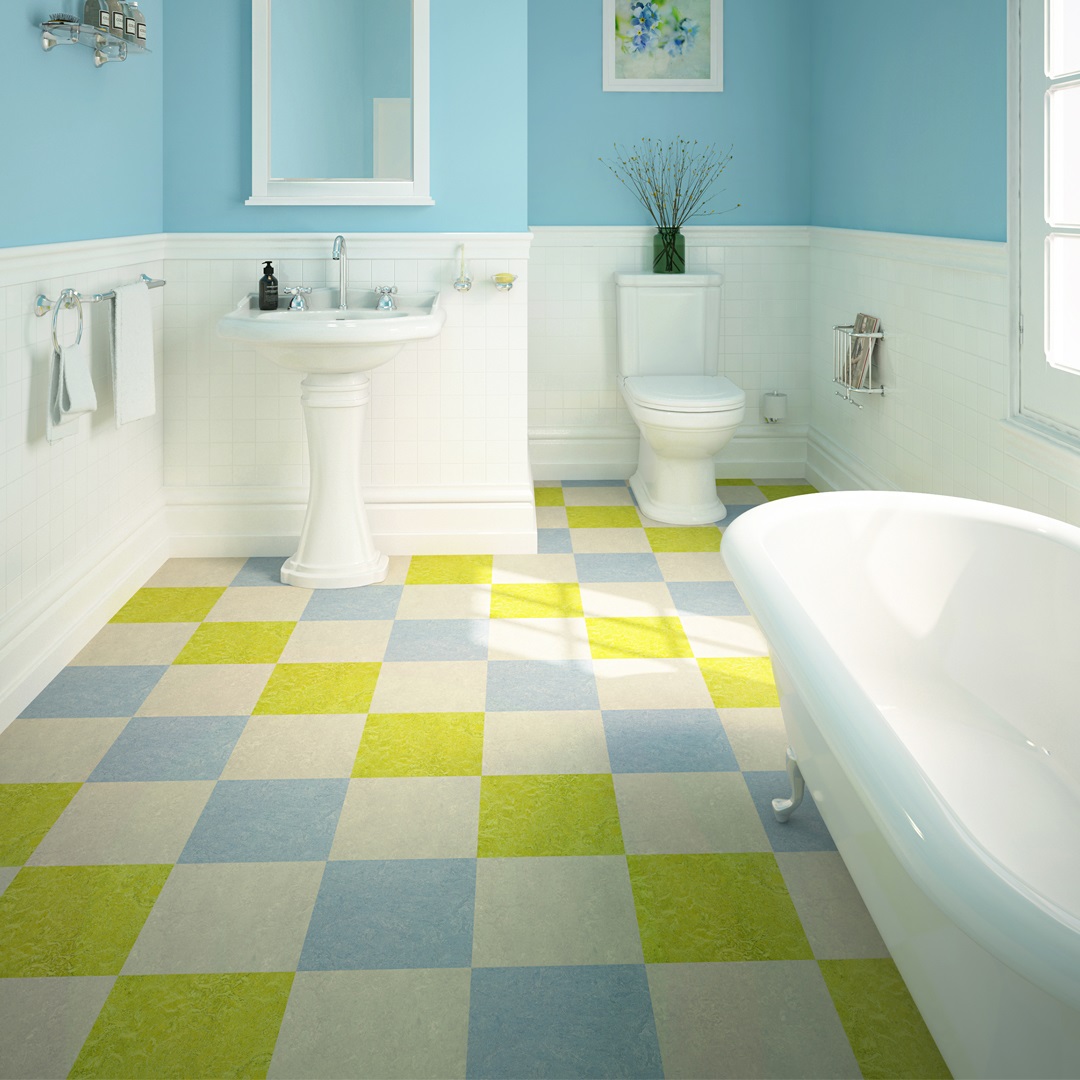
Linoleum was popular in the 1950s and ‘60s, and it’s sometimes seen as an old-fashioned flooring. However, it received something of a makeover in the 2000s and is once again a popular bathroom flooring option, particularly with eco-conscious homeowners. Linoleum is a natural product made from linseed oil, plant fibers, and resins. It has antibacterial properties and is claimed to suppress allergens and harmful microorganisms.
Linoleum comes as sheets, tiles, and occasionally as planks. It is easy to fit, though large sheets can be difficult to manage in small bathrooms. Like ceramic and porcelain tiles, it can be used over underfloor heating. It is very durable, provides good comfort, and is easy to keep clean. While it is water-resistant, it is not fully waterproof, so periodic application of a sealer is recommended.
Pros: Natural product with hygienic properties and better environmental credentials than most flooring types
Cons: Considerably more expensive than vinyl and not completely waterproof
RELATED: Linoleum vs. Vinyl Flooring: What’s the Difference?
5. Concrete
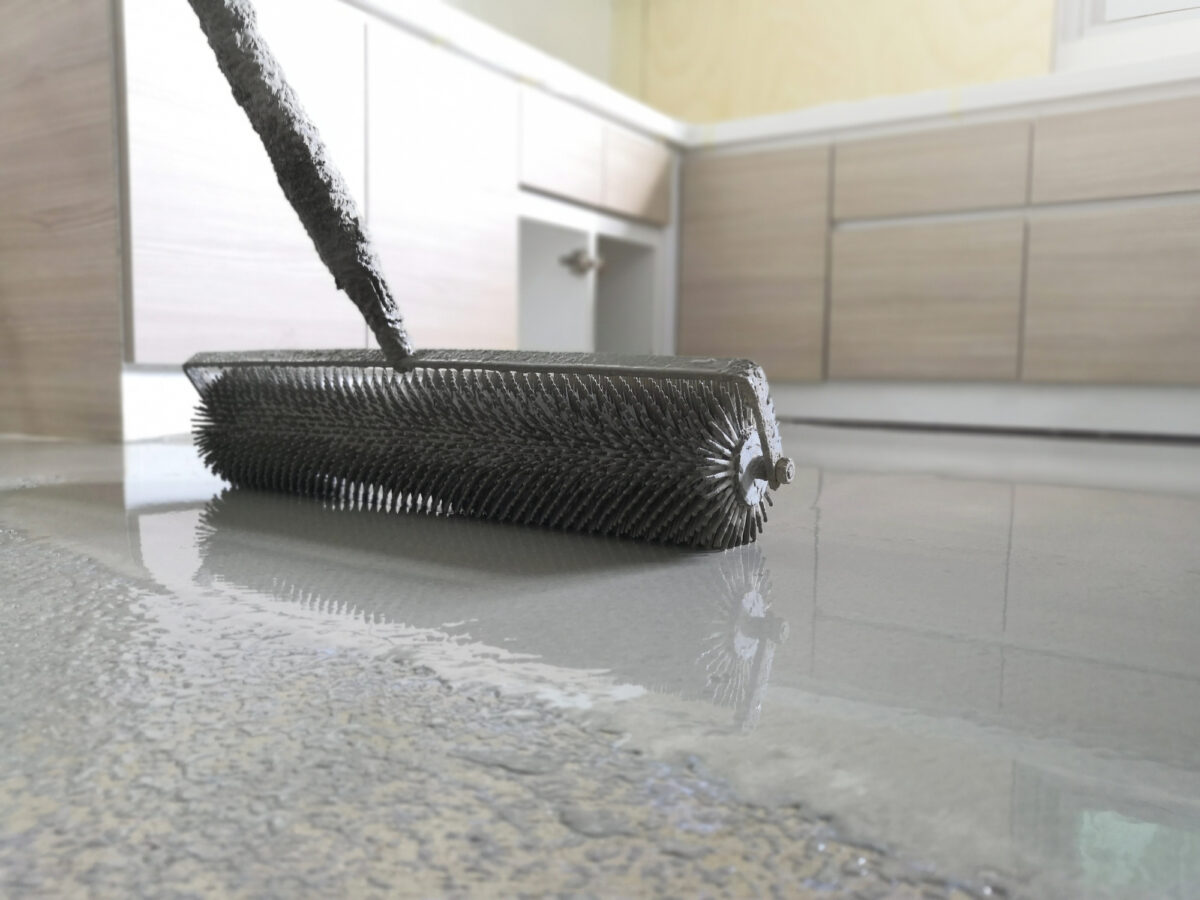
Concrete is an unusual material for a bathroom floor, but is unbeatable for creating a modern industrial style, and it has a number of advantages over other materials. Concrete is poured in place, making it a great way of combining bathroom and shower floor ideas, as it can be formed as a single continuous layer. The fact that it can flow around awkward shapes can also make it one of the better flooring ideas for small bathrooms. Concrete is very hard-wearing, and although it’s porous, it can be sealed to make it waterproof. Concrete can also be colored, painted, and textured.
There are a couple of downsides to concrete for bathroom flooring, however. Mixing and pouring concrete is labor-intensive, and although the surface may be dry to the touch in 24 hours, it takes at least a few days to cure enough to be walked on. Additionally, it can be difficult to warm unless accompanied by underfloor heating.
Pros: Unbeatable for an industrial look and very hard-wearing
Cons: Takes several days to cure fully and is slippery when wet unless textured
6. Natural Stone
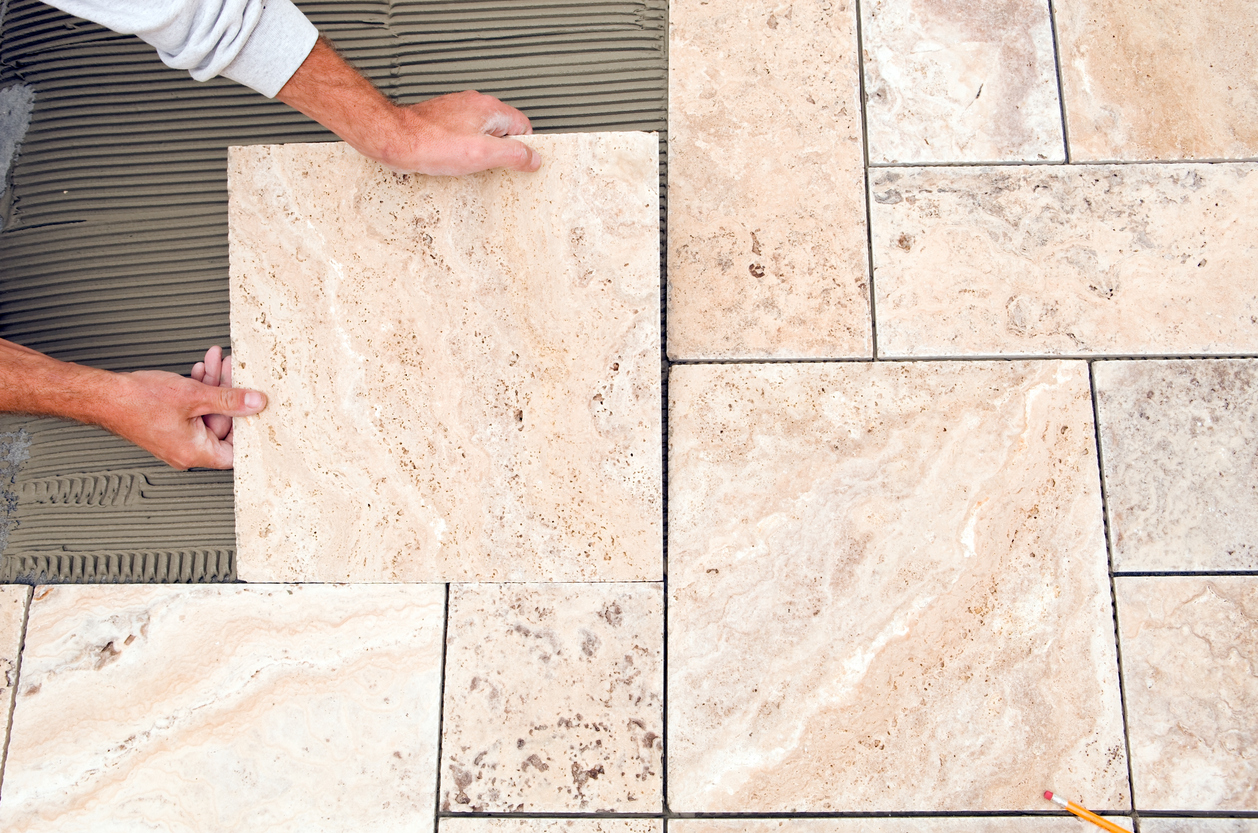
Few bathroom flooring ideas are more luxurious or more impressive than a natural stone like marble and quartz. Granite and slate can also be appealing, and those are available in darker shades often favored by designers when paired with lighter colored walls. Natural stone for bathroom floors almost always comes in the form of tiles, though sizes can vary. Large tiles can make a particularly strong statement in spacious bathrooms.
Natural stone should last many years but is often expensive. A sealer is usually required to make it fully waterproof. Although marble looks stunning, it’s not suitable for high-wear areas as it is prone to scratching. Natural stone can provide great visual warmth, but the material itself is often cold to the touch—and there may be safety issues when it’s highly polished. Finally, laying tile made from natural stone can be difficult and require professional help.
Pros: Unmatched beauty for a luxury bathroom
Cons: Often expensive, both in terms of material and labor costs
7. Cork
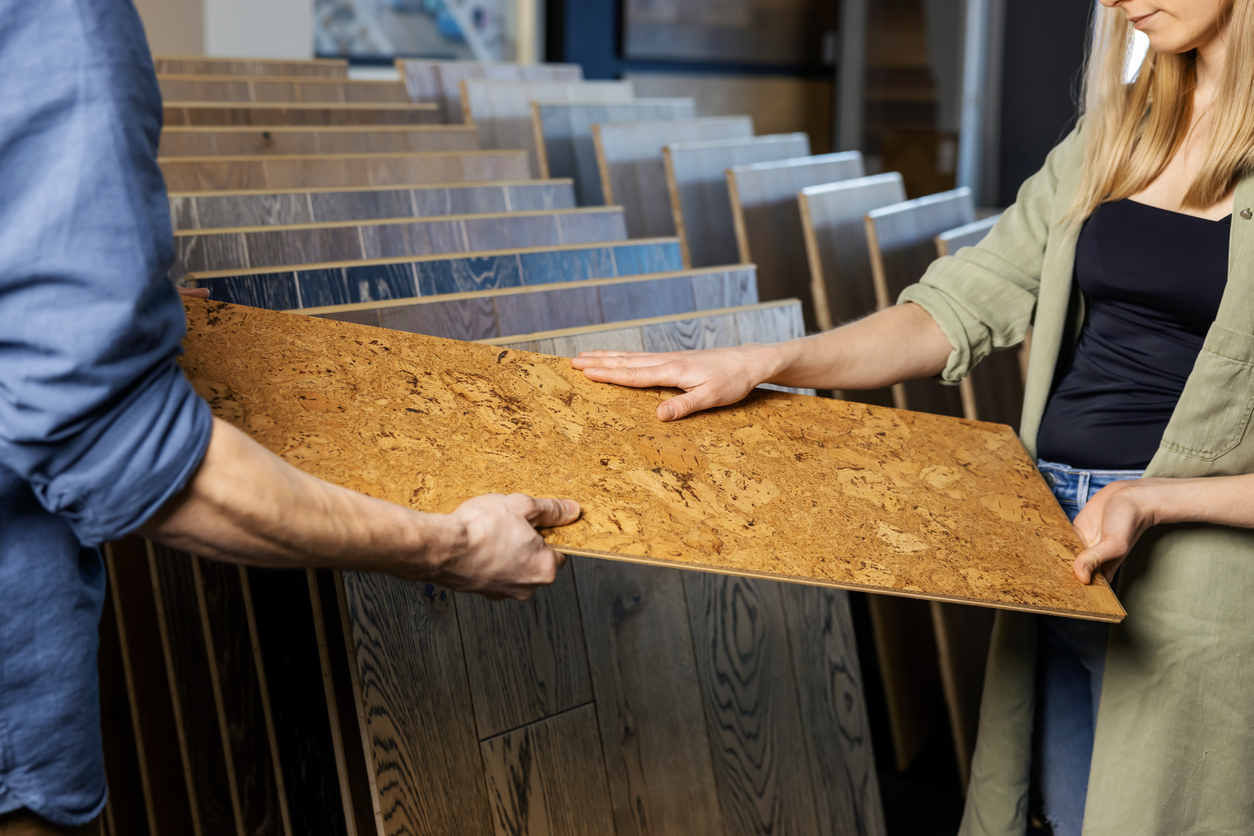
Cork is one of the less common types of bathroom flooring, yet it is one of the most eco-friendly and sustainable choices. It is made from the bark of the cork oak. Careful harvesting ensures there is no damage to the tree, and the cork regrows naturally. Cork flooring is relatively inexpensive and easy to cut and fit. The surface texture is nonslip, feels pleasant underfoot, and isn’t cold to the touch. Cork also resists bacterial growth.
Although the natural finish is popular, cork comes in many colors and textures. It is porous, so for bathroom use, it will need to be sealed. It can also deform if heavy objects are placed on it—such as the weight of a person on a stool, for instance—but in most cases, it will regain its shape when the pressure is removed. However, it can tear or chip if things are dropped onto it or dragged across its surface.
Pros: Eco-friendly, made from renewable sources, and offers a natural warmth and pleasant texture
Cons: Can be damaged relatively easily and is porous, requiring periodic maintenance
RELATED: 10 Flooring Surprises That Look Like Other Flooring
8. Bamboo
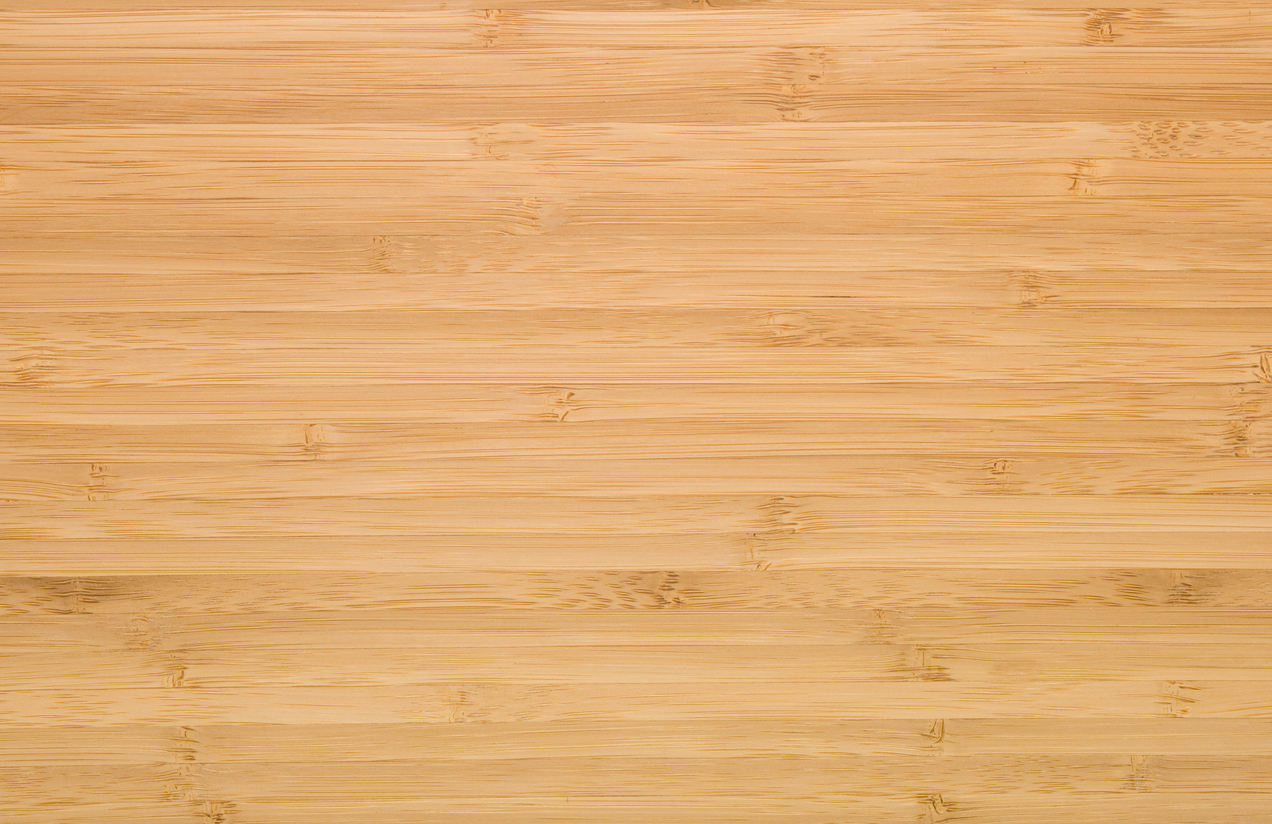
A bamboo floor is another sustainable way of replacing traditional bathroom flooring materials. Bamboo is a fast-growing grass that is usually formed into strips or planks. These may be supplied as solid bamboo, or combined with other woods or fibers, which is often labeled as engineered bamboo. Depending on the materials and adhesives used, the latter may not have the same environmental credentials.
Although bamboo typically grows in water or marshy areas and is more resistant to water damage than wood, it is not fully waterproof. While it can be treated, it can swell if water gets into the joints, so splashes should be wiped up quickly. Bamboo is quite hard and durable, but the surface can be scratched. With solid bamboo flooring, it can be sanded and refinished when damaged. Engineered bamboo, on the other hand, would probably need to be replaced.
Pros: Sustainable bathroom flooring with unique visual appeal
Cons: Limited in terms of color, not fully waterproof, and can scratch
9. Terrazzo
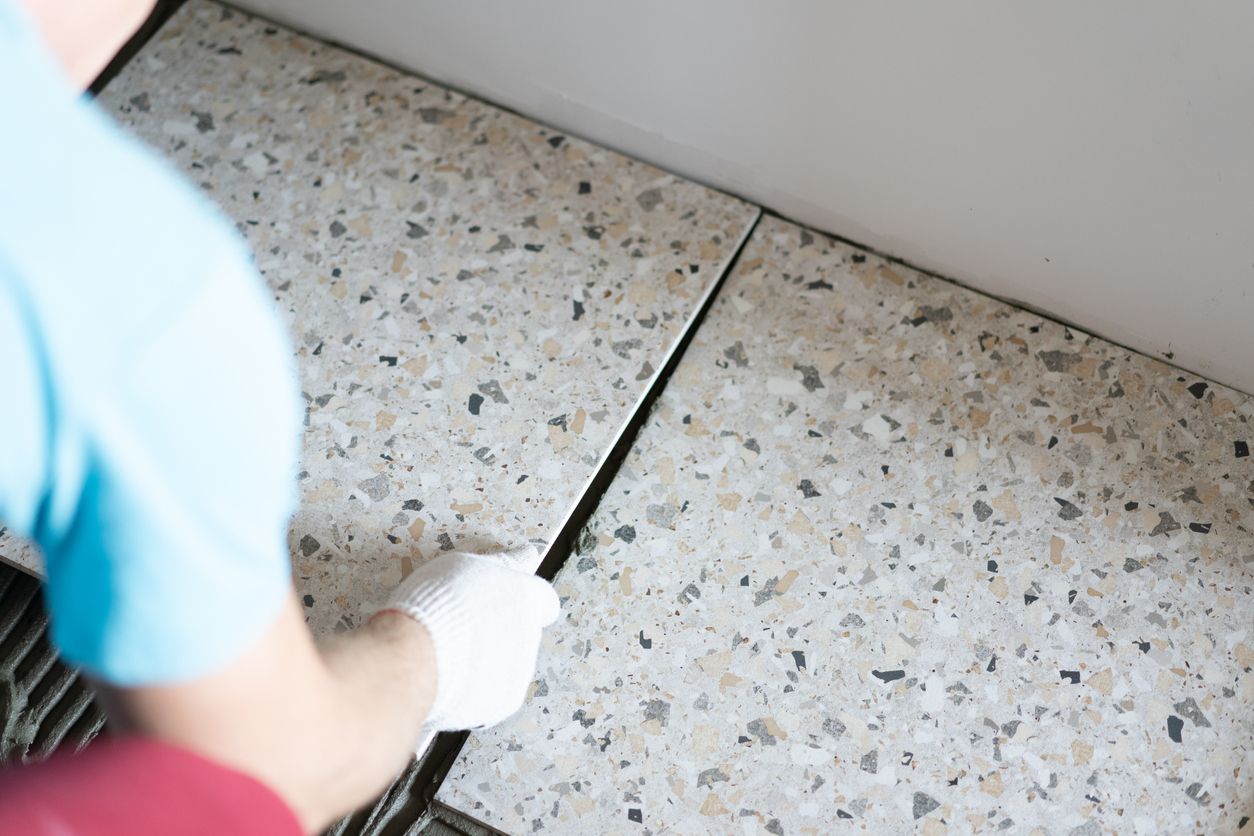
Terrazzo flooring is right on trend at the time of writing, yet what is often perceived as a modern bathroom flooring has actually been around for hundreds of years. Italian craftsmen first made terrazzo in the 16th century from waste marble and granite chips, mixed with cement. Because of these inclusions, the finished surface would sparkle with reflected light, creating a unique ambience. This type of terrazzo is still available but needs to be poured on site. Although it produces a beautiful, seamless bathroom floor, it is labor-intensive and expensive. Terrazzo also comes in tile form, which, while not cheap, is much more affordable.
There are two types of terrazzo flooring, and the difference is important. Cementitious (cement-based) terrazzo is porous, whereas resin-based terrazzo is completely impervious to water. So while both are very hard-wearing and easy to maintain, the former needs periodic sealing.
Pros: Can produce stunning, luxurious, and seamless floors that are very hard-wearing
Cons: Expensive when poured, and cementitious terrazzo requires periodic sealing

